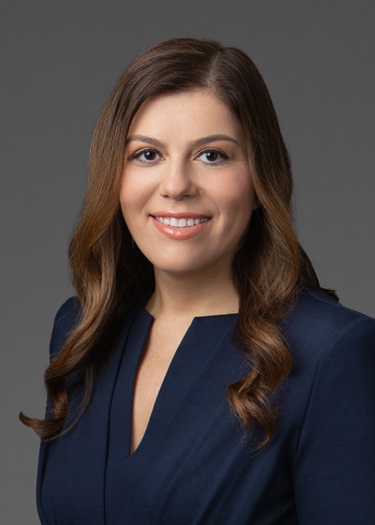On February 6, 2020, U.S. Securities and Exchange Commission (SEC or Commission) Commissioner Hester M. Peirce (Commissioner Peirce) gave a speech describing the need for more clarity on application of the securities laws to the offer and sale of blockchain tokens or digital assets. As part of the speech, she proposed a safe harbor (Proposal or Safe Harbor) exempting certain tokens from the registration requirements of the Securities Act of 1933 (Securities Act) and Securities Exchange Act of 1934 (Exchange Act), including an exemption for persons engaging in certain transactions with respect to such tokens from the definitions of “exchange,” “broker” and “dealer” under the Exchange Act. The Proposal is of significance to any existing or future blockchain development team considering the distribution of tokens, as well as any digital asset exchange or over-the-counter desk that facilitates transactions in digital assets, blockchain tokens or virtual currencies.
Commissioner Peirce explained that in the course of building decentralized blockchain networks, development teams need to get blockchain tokens into the hands of network users so that users can participate and use the tokens as intended on the network. She notes that the SEC’s current approach to digital assets, a combination of settled enforcement actions and nonbinding guidance related, has made it extremely difficult to distribute blockchain tokens without implicating the federal securities laws. Most recently, the SEC’s Strategic Hub for Innovation and Financial Technology (FinHub) released guidance on how to apply the Howey Test to determine whether a transaction is an “investment contract” and thus a security.1 As first described by the U.S. Supreme Court in SEC v. W.J. Howey & Co.2 (Howey Test), the court determined that the sale of portions of orange groves, together with an arrangement for caring for the trees and getting the fruit to market, was a security. Commissioner Peirce notes that in applying the Howey Test to digital assets “some commentators have pointed out that [the SEC has] elided the distinction between the token and the investment contract.” Whether a digital asset itself is an investment contract remains the subject of ongoing litigation in various federal courts. In one pending high-profile case, the central issue is the nuanced question of whether digital assets distributed pursuant to an exempt securities transaction are also securities.3 However, Commissioner Peirce notes that the Proposal is unlikely to affect the approach taken to date in SEC enforcement actions addressing digital assets.
The exemption from registration provided by Commissioner Peirce’s nonexclusive Safe Harbor is for a three-year period from the date of first token sale, effectively shifting the application of the Howey Test from the initial token sale to a future date. The grace period is intended to provide the blockchain network sufficient time to become functional or decentralized (defined in the Proposal as “network maturity”) such that the offer and sale of the blockchain tokens would not satisfy the Howey Test at the end of the three-year period. The definition of network maturity “is intended to provide clarity as to when a token transaction should no longer be considered a security transaction but, as always, the analysis will require an evaluation of the particular facts and circumstances.” (Emphasis added.) If, at the end of the three-year period, a blockchain network had not reached network maturity, the development team would no longer be able to rely on the Safe Harbor and would need to consider the application of the federal securities laws to the offer and sale of the tokens.
A few additional elements of the Safe Harbor are as follows:
- Public Disclosure. The development team is required to make substantial disclosures on a freely accessible public website. As opposed to traditional securities disclosures that relate to the securities issuer, this information would be specifically tailored to the development team, blockchain network operations and token economics.
- Liquidity. Secondary trading is recognized as a necessary component in developing a mature network. The development team would need to make a good faith and reasonable effort to create liquidity by seeking trading platforms that will support the token. The Safe Harbor provides that such trading platforms and other intermediaries would be exempt persons from the definition of “exchange,” “broker” or “dealer” under the Exchange Act. The trading platforms must demonstrate compliance with other applicable federal and state laws, as well as regulations related to money transmission, anti-money laundering and consumer protection.
- SEC Filing Requirement. Within 15 days of the first sale of tokens, the development team would be required to file with the SEC a notice of reliance on this Safe Harbor.
- Bad Actor Disqualification and Antifraud Protections. The Proposal seeks to balance fostering innovation with investor protection by making the Safe Harbor unavailable to development teams with a member that is a “bad actor” as defined by the federal securities laws. The Safe Harbor also preserves the SEC, state regulators and private purchasers’ rights of action under the securities laws’ antifraud provisions.
In terms of next steps, Commissioner Peirce welcomed feedback on the draft Proposal. However, she acknowledged that an actual safe harbor proposal will require approval by vote of the full Commission and be subject to the SEC’s formal rulemaking process, including publication in the Federal Register and an open comment period for public input. Given the impact of the Proposal on blockchain development teams and trading platforms, industry participants should consider the potential impact to its existing business model and actively engage in providing feedback to the SEC in advance of formal rulemaking.
1 See our previous Sidley Update SEC FinHub’s Digital Asset Framework: A Guide for Issuers and Secondary Trading Markets.
2 328 U.S. 293 (1946).
3 SEC v. Telegram Group Inc. and Ton Issuer Inc., Case No. 1:19-cv-09439-PKC (S.D.N.Y.). See also Brief for the Chamber of Digital Commerce Amicus Curiae.
Sidley Austin LLPはクライアントおよびその他関係者へのサービスの一環として本情報を教育上の目的に限定して提供します。本情報をリーガルアドバイスとして解釈または依拠したり、弁護士・顧客間の関係を結ぶために使用することはできません。
弁護士広告 - ニューヨーク州弁護士会規則の遵守のための当法律事務所の本店所在地は、Sidley Austin LLP ニューヨーク:787 Seventh Avenue, New York, NY 10019 (+212 839 5300)、シカゴ:One South Dearborn, Chicago, IL 60603、(+312 853 7000)、ワシントン:1501 K Street, N.W., Washington, D.C. 20005 (+202 736 8000)です。

